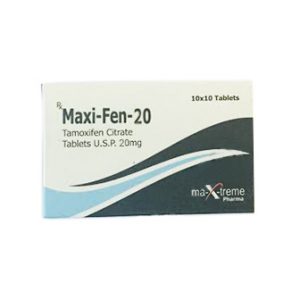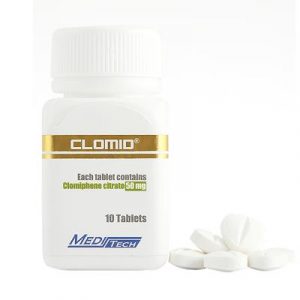Description
Description
Pharmacological effect
Anti-neoplastic anti-estrogenic non-steroidal agent.
The mechanism of the antitumor effect is due to competitive binding to estrogen receptors in target organs and inhibition of estrogen formation. Tamoxifen complex with the endogenous ligand 17-r-estradiol.
The pharmacological action of tamoxifen is not carried out by the compound itself, but by its active metabolite called endoxifen and formed during metabolic biotransformation with the participation of the isoenzyme of the cytochrome system CYP2D6, therefore the polymorphism by l activity of the CYP2D6 isoenzyme may be associated with differences in the clinical effect obtained. Poor metabolizers may experience diminished therapeutic effect. The full effect of ta-moxifene treatment in CYP2D6 poor metabolisers has not been studied.
CYP2D6 genotype: Available clinical data suggest that in patients homozygous for a recessive allele, there may be a reduction in the therapeutic efficacy of tamoxifen in the treatment of breast cancer. These clinical trials were mainly conducted in postmenopausal women
Pharmacokinetics
After ingestion, it is well absorbed from the gastrointestinal tract. The maximum concentration in the blood is reached within 4-7 hours after administration. A stable therapeutic concentration in the blood (approximately 300 ng/l) is established after 4 weeks of treatment at a dose of 0.04 g/day. The association with serum albumins is nearly 99%.Metabolized in the liver by hydroxylation, demethylation and subsequent conjugation, resulting in a number of metabolites which have the same pharmacological profile as the parent compound. Most of tamoxifen is initially metabolized with the participation of the CYP3A4 isoenzyme to N-desmethyltamoxifen, and then with the participation of CYP2D6 to another active metabolite, endoxyphene. In patients with reduced activity of the CYP2D6 isoenzyme, the concentration of endoxifen is approximately 75% lower than in patients with normal CYP2D6 activity. Simultaneous administration of potent CYP2D6 inhibitors approximately equally reduces the plasma concentration of endoxifen.
Tamoxifen is excreted primarily with bile. Only a small amount of the drug is excreted in the urine. The half-life of the initial preparation is about 7 days, for the active metabolite -14 days.
Indications for use
Breast cancer in women.
The drug is used for the adjuvant treatment of breast cancer in women with affected lymph nodes, as well as metastatic breast cancer in men and women.
Contraindications
Increased individual susceptibility to tamoxifen, severe leukopenia, thrombocytopenia, hypercalcemia, pregnancy, lactation
Dosage and direction
Tablets are given inside without chewing, with a small amount of water. If two or more tablets are prescribed per day, they can be taken in one or two intakes.
The recommended daily dose of tamoxifen for adults is 20 mg. In the case of widespread forms of the disease, the doses can be increased up to 30-40 mg per day. The maximum daily dose of tamoxifen is 40 mg.Objectively, the treatment effect is usually observed after 4-10 weeks of treatment, but in the case of bone metastases, the effect can only be observed after several months of treatment.
The duration of treatment with tamoxifen is determined by the severity and course of the disease. Usually the treatment is long. '
In the treatment of elderly patients or patients with hepatic or renal insufficiency, no dosage adjustment is necessary.
Tamoxifen 40






Reviews
There are no reviews yet.